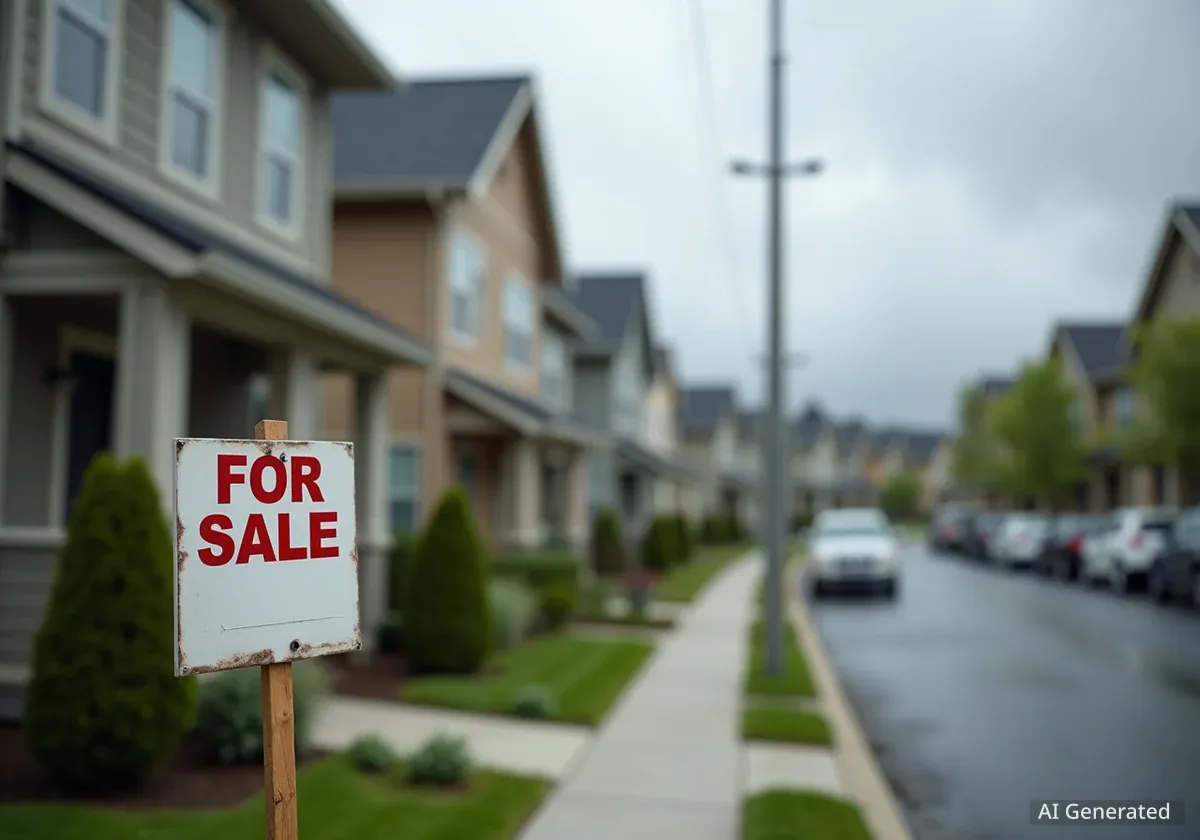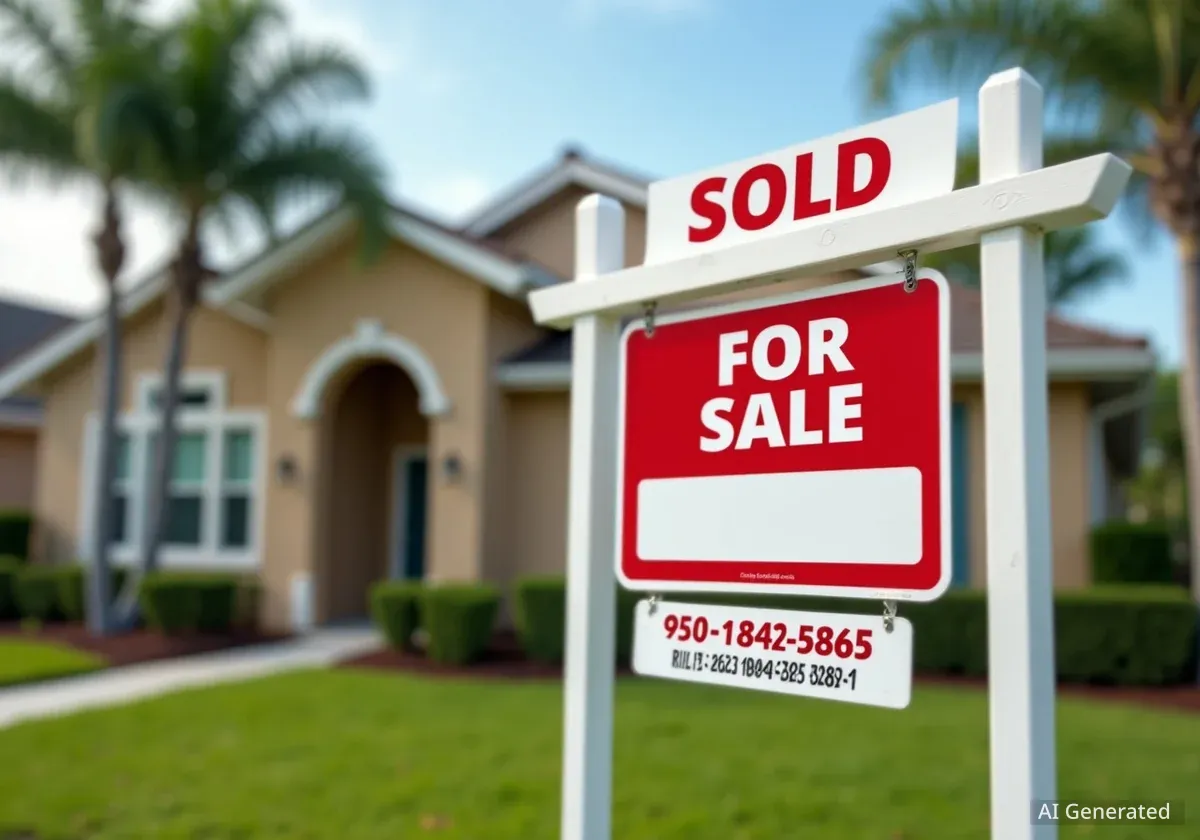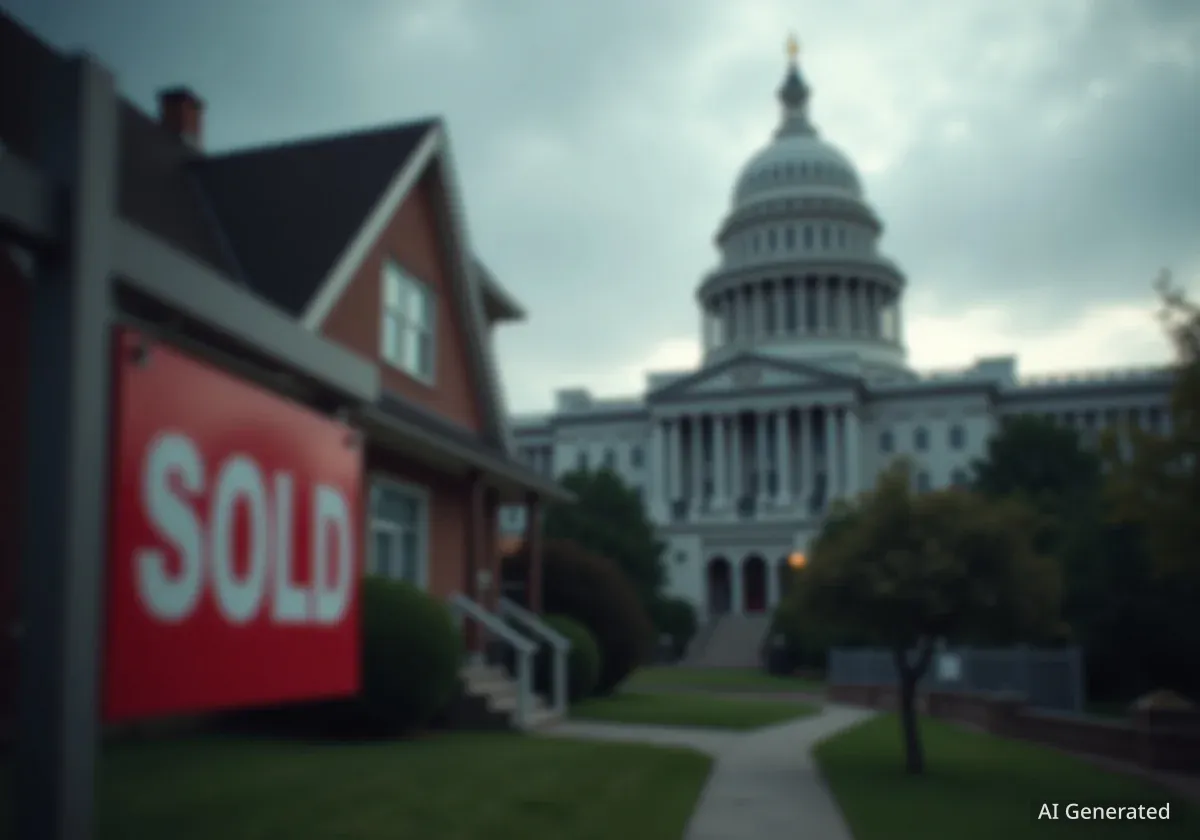Economist Peter Schiff, who gained prominence for predicting the 2008 financial crisis, has issued a new warning regarding the U.S. housing market. He suggests that a significant disconnect between high home prices and soaring mortgage rates could lead to a painful correction, potentially causing a wave of homeowner defaults.
Schiff argues that the market is propped up by homeowners locked into low-interest mortgages, but this stability may not last. He points to the fundamental issue of affordability, where current home values are inconsistent with today's higher borrowing costs.
Key Takeaways
- Economist Peter Schiff warns that U.S. home prices are unsustainably high relative to current mortgage rates.
- He predicts a potential market correction that could lead to defaults, similar to the 2008 crisis.
- The current market is supported by homeowners with low-rate mortgages who are hesitant to sell, creating an inventory shortage.
- Key differences from 2008 include stricter lending standards and a significant national housing deficit, which have so far kept prices elevated.
The Core Imbalance in the Housing Market
According to Schiff, the foundation of the current housing market's high valuation was built on an era of historically low interest rates. For years, the Federal Reserve's policies kept rates near zero, allowing homebuyers to secure mortgages at rates as low as 3%.
"Homes are bought — not based on what the home cost — but based on the monthly payment," Schiff explained in a recent video analysis. This dynamic allowed prices to climb significantly because the low monthly payments made expensive homes seem affordable.
However, the economic landscape has changed dramatically. The average rate on a 30-year fixed mortgage has more than doubled, climbing from below 3% to over 6% in just a few years. Despite this sharp increase in borrowing costs, home prices have not adjusted accordingly.
Market Data at a Glance
Data from the S&P CoreLogic Case-Shiller U.S. National Home Price Index shows a more than 50% increase in home prices over the last five years. This sustained price growth has occurred even as mortgage rates have risen, creating a significant affordability challenge for new buyers.
Schiff believes this situation is unsustainable. He argues that prices must "eventually" fall to align with the reality of more expensive mortgages, a process he fears could trigger a "housing emergency."
A Warning of Potential Homeowner Defaults
Schiff’s primary concern is what happens when prices begin to correct. He foresees a scenario where falling home values could push many recent buyers into negative equity, where they owe more on their mortgage than their home is worth.
"It's going to create a bunch of defaults and a lot of people are going to walk away and mail in their keys because they can't sell their houses for more than they owe," he stated.
This prediction evokes memories of the 2008 housing bust, when millions of underwater homeowners defaulted on their loans, a key factor in the subsequent financial crisis. If homeowners cannot sell their property for enough to cover their mortgage balance, foreclosure or strategic default become more likely outcomes.
The 'Lock-In Effect' and Market Gridlock
A unique feature of the current market is the so-called "lock-in effect." A vast number of current homeowners are staying in their homes because they hold mortgages with exceptionally low rates (often 3-4%). Selling and buying a new home would mean taking on a new mortgage at a much higher rate, significantly increasing their monthly payments.
This reluctance to sell has severely constrained the supply of available homes, which has helped keep prices high despite falling demand. Schiff warns that this is a temporary state.
"At some point, there are people that have to sell their houses for whatever reason," he said, citing life events like job changes, divorce, or death. "If they have to slash the prices to do it, they may not have enough money to repay the mortgages. And so this could have a cascading effect."
Contrasting Today with the 2008 Crisis
While Schiff’s warnings are stark, analysts point to several key differences between the current housing market and the one that collapsed in 2008. These factors could potentially mitigate the risk of a full-blown crisis.
Background: The Subprime Mortgage Crisis
The 2008 crisis was largely fueled by subprime mortgages, which were loans given to borrowers with poor credit history and often required little to no documentation of income. When these high-risk loans began to fail en masse, it triggered a collapse in the housing market and the broader financial system.
Today, lending standards are significantly more stringent. Banks and mortgage lenders now require thorough documentation and higher credit scores, reducing the number of high-risk loans in the system. This makes widespread, systemic defaults less probable than during the subprime era.
The Persistent Housing Shortage
Another critical factor supporting today's market is a severe lack of housing supply. Years of underbuilding following the 2008 crash have created a substantial deficit of available homes.
- According to real estate marketplace Zillow, the U.S. is currently short an estimated 4.7 million homes.
- This fundamental imbalance between supply and demand provides a strong floor for home prices, preventing the kind of rapid collapse seen in the last crisis.
- Even with reduced demand due to high rates, the limited inventory means that prices remain competitive in many regions.
Despite these mitigating factors, the tension between high prices and high rates remains the central risk. Schiff's analysis suggests that even with tighter lending and low supply, the fundamental math of affordability will eventually force a market correction.
Investor Perspectives on Economic Uncertainty
In times of economic uncertainty, investors often look for alternative assets to protect their wealth. Schiff, a long-time advocate for precious metals, points to gold as a potential hedge against inflation and market volatility.
He has publicly stated a belief that gold could reach $4,000 per ounce, a sentiment echoed by some major financial institutions. Goldman Sachs and JPMorgan have also issued forecasts suggesting gold could approach that price level in the coming years, citing geopolitical risks and central bank buying.
Another area of focus is rental real estate. Schiff has noted that "rents go up every year," reflecting the persistent demand for housing. Investing in rental properties can provide a stream of income that often keeps pace with inflation. Investment icon Warren Buffett has also praised real estate as a productive, income-generating asset, highlighting its long-term value compared to non-productive assets.





